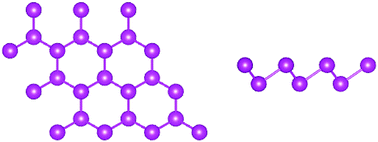Monolayer semiconductors of group-VA elements (As, Sb and Bi) with a graphene-like buckled structure offer the potential to achieve nanoscale electronic, optoelectronic and thermoelectric devices. Motivated by research on a recently-fabricated Sb monolayer (antimonene), we systematically investigate the thermoelectric properties of β-As, Sb and Bi monolayers by combining first-principles calculations and semiclassical Boltzmann transport theory. The generalized gradient approximation (GGA) plus spin–orbit coupling (SOC) is adopted for the electron part, and GGA is employed for the phonon part. It is found that SOC has important influences on the electronic structures, especially for Bi monolayers, that can induce observable SOC effects on the electronic transport coefficients. More specifically, SOC not only has detrimental influences on the electronic transport coefficients, but also produces enhanced effects. The calculated lattice thermal conductivity decreases gradually from the As to Bi monolayer, and the corresponding room-temperature sheet thermal conductance is 161.10 W K−1, 46.62 W K−1 and 16.02 W K−1 for the As, Sb and Bi monolayers, respectively, and these values can be converted into a common lattice thermal conductivity by dividing by the thickness of 2D material. The decreased thermal conductivity from As to Bi monolayer can be explained by the decreasing group velocities and phonon lifetimes. The sheet thermal conductance of the Bi monolayer is lower than that of other 2D materials, such as semiconducting transition-metal dichalcogenide monolayers and orthorhombic group IV–VI monolayers. A series of scattering times was employed to estimate the thermoelectric figure of merit, ZT. It is found that the n-type doped As and Bi monolayers have better thermoelectric properties than the p-type doped As and Bi monolayers, while a comparable ZT between the n- and p-type doped Bi monolayers is observed. Much higher ZT values can be obtained, provided that the electrical thermal conductivities are calculated using the Wiedemann–Franz law with L being constant. These results can stimulate further experimental works to open the new field for thermoelectric devices based on monolayers of group-VA elements.
